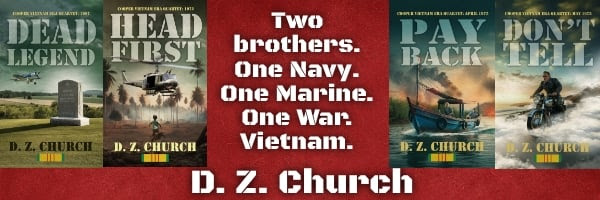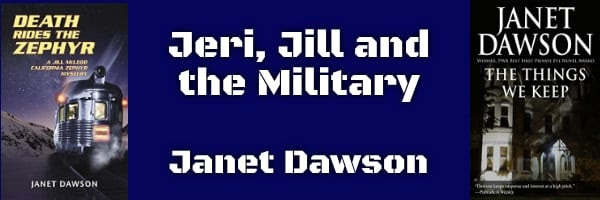Veterans Day is coming up on November 11.
While Memorial Day was envisioned as a way to honor those who died in the Civil War, Veterans Day has a different history. It used to be called Armistice Day.
World War I formally ended at 11 AM on November 11, 1918—the eleventh hour of the eleventh day of the eleventh month. That’s when the Armistice between the Allied forces and Germany went into effect. Poppies – bright red flowers – are frequently associated with Armistice Day. The brutal fighting in France and Flanders (northern Belgium) churned up the soil and in 1915, poppies began blooming all over the ravaged landscape. Lt. Col. John McRae, a Canadian surgeon, wrote a poem called “In Flanders Fields.” As a result, poppies became a touchstone for war remembrance. You can read the poem here.
Armistice Day is celebrated on November 11 in many countries. In the United States, the first Armistice Day was commemorated with a proclamation by President Woodrow Wilson. In 1938, Armistice Day was made a legal holiday The aftermath of World War II brought a push to recognize veterans of all wars. In 1954, Armistice Day became Veterans Day.
Janet Dawson and D. Z. Church are both veterans of the U. S. Navy. So, it’s a given that our life experiences would find their way into our fictions. Read on to find out more.

Veteran’s Day. I am one. I come from a long line of them. My grandfathers served in World War I, my father and uncles in World War II, in both the Pacific and European theaters. We cover the services, Army, Navy, Air Force, no Marines, though.
So, I guess it’s only natural I’d write about the military. My first series, The Cooper Vietnam Era Quartet, consists of four books that follow one family from 1967 to 1975. I put a lot of heart and soul into the series, only to find out it doesn’t fit neatly into any one genre.
It is a family saga. Perhaps, first and foremost. Each book is a thriller based on historical events, and all are historical fiction. They also chart the women’s movement during the period, the social unrest, and the fraught politics of the time. I love them; they are dear to me.
The books are also darker than any of the other books I’ve written. I guess because the time was darker for me. But they do not fit the military thriller genre. Not hard-core, lone-wolf, boom-blast military enough.
Dead Legend starts the series, which features two brothers estranged by their Naval aviator hero father’s suicide. One Marine and one Navy. Their female cousin, a brand-new Navy Ensign, provides an able second. The antagonist is the Navy, and the evil men do. The basis of the plot is fact, as disturbing as it is.
The nutshell: One Lethal Secret. Laury and Byron Cooper, two military brothers, tied by duplicity to a French Indochine family, the Minotier, grapple with a lethal secret from their past that reaches far into Naval Operations, threatening the skies over Vietnam.
The second book, Head First, has elements of a procedural. The daughter of the Navy pilot brother is kidnapped from Berkeley, California, setting off a tense chain of events, from terrorism to heroism during the Christmas bombings of 1972. Everybody gets involved. It’s about family, finding family, protecting family and moving on.
The nutshell: Two Dangerous Losses. As Nixon orders the carpet bombing of Vietnam, the French Indochine Minotier make a grab for one of their own, setting the Coopers on a trajectory to quell a terrorist plot on US soil, hunt down the lost, and force an unsanctioned insertion into Vietnam.
Number three, Pay Back, takes place during the Fall of Saigon in 1975. Why the title Pay Back? Because favors extended during the first two books come due. It’s a corker, can’t put down, nailbiting, whopping good tale.
The nutshell: Three Deadly Promises. The French Indochine Minotier deliver on an old promise, then demand payment, a POW calls in a marker, and an old allegiance leads to a breach of faith. As Saigon falls, Laury Cooper walks the tightrope to pay back his debts and ensure his family’s future.
The basis of the story in the fourth book, Don’t Tell, is an experience I had while in the Navy. I think I needed to write it for catharsis. So, I hope women who read the series notice the female arc of the saga.
The nutshell: Four Fatal Threats. The fall of Saigon leaves the Coopers and Minotier in shambles and everyone’s future at risk. None more so than Laury Cooper, who must outsmart the CIA and the French Indochine Minotier to save his marriage and his own life.
Did I say I love these books? I also admit they are a wee bit undiscovered. I suspect that, even all these years later, unless the hero is some raging paladin rampaging through the jungle seeking revenge against the North Vietnamese, people are uncomfortable with the Vietnam War. It was a tough time in this country’s history. I know, I had my shoes spit on while in uniform in the Denver airport.
As for reviewers, they say this: Readers, eager for mysteries laced with intense action scenes and compelling family dynamics, will feast on The Cooper Vietnam Era Quartet. Ideal for fans of wartime stories and sweeping family sagas, this satisfying, wide-ranging epic delivers a heady mix of intrigue and history that will keep readers on the edge of their seats, delivering pulse-pounding, smart tales of suspense.
Veteran’s Day. I am one. And the female protagonist, well, she’s sort of kind of me.
Dead Legend is $.99 for Veteran’s Day. And the Cooper Vietnam Era Quartet is always just $8.99.

My grandfather was in the Army during the Spanish-American War, serving in the Philippines. Dad was in the Navy during World War II, and several uncles served in the Navy and the Army. Mom was a Rosie, working at a shipyard. And I served in the Navy, so it’s not surprising that that the military plays a role in my books. Many characters in the 14-book Jeri Howard series have a passing familiarity with Navy life. The first book in the series, Kindred Crimes, features Jeri looking into a long-ago murder in Alameda, California, the victims a husband and wife, the husband an officer stationed at the Alameda Naval Air Station, which has since been closed. Another character is a retired Navy admiral who also appears in the third book, Take a Number, when his daughter is a suspect in the murder of her abusive husband, a Navy enlisted man.
The second book in the series, Till the Old Men Die, features a supporting character who is a Navy commander. There’s also a character based on a woman I met years ago in Newport, RI, when I was attending a Navy school after graduating from Officer Candidate School. She was a retired Navy nurse who was stationed in the Philippines during World War II, taken prisoner when Corregidor fell to the Japanese, spending the rest of the war in a POW camp. When life presents me with such inspiration, I use it.
The Navy also features in the 14th book in the series, The Things We Keep, when Jeri finds two skulls and assorted bones in an old Navy footlocker in a house in Alameda, carved into flats that were rented to sailors at the air station back in the day. By now the base has been closed for years, its buildings either repurposed or abandoned. Jeri’s investigation leads her to a young couple who disappeared back in the 1960s, a local girl and her Navy boyfriend. Another couple also went missing at the same time, the daughter of a Navy officer and her boyfriend, who helmed a rock back in San Francisco.
The Jeri Howard book I’m working on now has veterans of a different sort. In Bit Player, we learn that Jeri’s grandmother, Jerusha Layne, worked as an actress in Hollywood in the late 1930s and early 1940s, until the attack on Pearl Harbor changed everything. She married Ted Howard, whose brother had been killed at Pearl Harbor. While he was away with the Navy in the Pacific, Jerusha moved to the San Francisco Bay Area and went to work as a welder at the Kaiser Shipyard in Richmond, CA. Yep, Jeri’s grandma was a Rosie the Riveter, a veteran of the World War II Homefront.
The Jill McLeod California Zephyr books are set in the early 1950s, where my protagonist works as a Zephyrette, traveling aboard the historic train called the California Zephyr as it makes daily runs between the Bay Area and Chicago. Jill has never served in the military. But she grew up during the years of World War II, and its aftermath. And her fiancé was killed in the Korean War.
The first book in the series, Death Rides the Zephyr, has Jill finding the body of a murdered passenger in his compartment, with a plot that leads back to the war years. And she meets a new friend, the redoubtable Mrs. Grace Tidsdale, known to her friends as Tidsy. In subsequent books, Jill learns that Tidsy has a wartime past of her own, working as a “government girl” during the war, with some shadowy things hovering in her past. And during this first journey, Jill meets Mike Scolari, late of the Army Air Force, who is going to college on the GI Bill.
The next book in the series is Death Deals a Hand, and readers meeting Jill’s cousin Doug, who was with the Tenth Mountain Division serving in Italy during the war. During the train journey a passenger is murdered, a man with links to bootlegging in the 1920s and 1930s—and the wartime black market in the 1940s.
